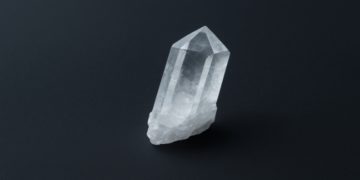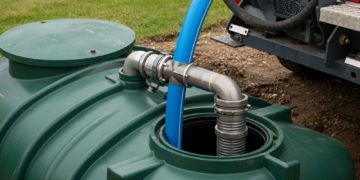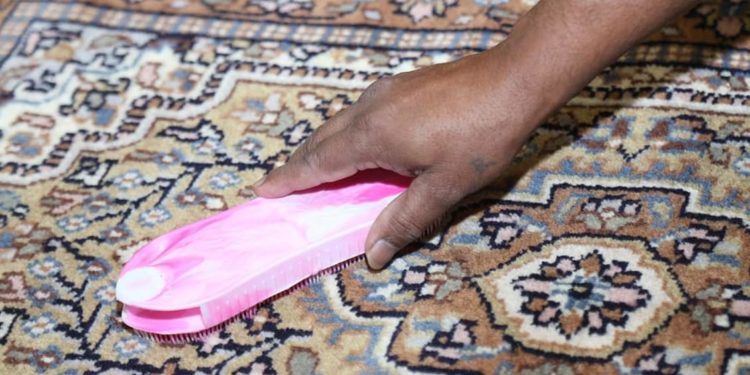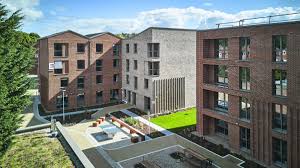A home can suffer a lot of damage from floodwater, in which carpets also must face a lot of damage. You need to dry your carpets as soon as possible after a flood; otherwise you will be on the edge of experiencing an extremely bad smell.
Mold will start to grow on wet carpets after a while, which can be damaging to your health. Having wet carpets in your house can lead to bad odors and hurt the floor under the carpet.
Taking quick steps to dry clean the carpets is not just helpful for them but will also be protective for your surroundings. This guide offers you safe and simple steps for drying from your carpets after a flood. Following these easy tips can stop problems from getting worse in time.
Why Your Carpet Needs Special Cleaning After a Flood?
When floods occur, dirt, harmful bacteria and sewage also comes along with it. Having this water in your carpet attracts mold and germs to develop. Not cleaning your carpet right after the flood can ruin it and make you sick.
It is not just about drying the carpets, there is a lot more you need to do. You should wash, disinfect and dry completely the carpet before using it. Responding quickly to such accidents preserves your carpet, avoids mold development and protects your family from being ill with dirty water.
Quick Tips for Drying Your Carpets after a Flood
1. Remove Excess Water Right Away
After a flood occurs, vacuum or mop the flooded area as much as you can. The sooner you can act, the better it will be. If water stays in carpets for a long period, mold can begin to grow. Remove any puddles and check that the ground isn’t wet.
There’s no time to waste when drying carpets. If you are not an expert in it, then hiring professionals for carpet cleaning services can work best.
2. Lift and Separate Carpet Layers
Slowly pick up the wet carpet and bring it outside. Pull the paint away from the edges and corners. As a result, air can travel under the island.
Use small blocks or plastic sheets to have them between the carpet and the floor. Letting the surfaces touch for a short time will let them dry faster. When possible, take the carpet outside to dry.
3. Use Fans to Increase Airflow
If you can, make sure to set up a strong fan in the room. Lead them to the spot where the carpet is wet. Set them to run over long periods, whether it’s multiple hours or several days.
Proper ventilation speeds up your clothes’ drying and protects them from mold. Let the air outside in through open doors and cabinets.
4. Bring in a Dehumidifier
A dehumidifier removes the excess moisture in the air. By doing this, the room dries quicker. Put the air freshener where the wet carpet is to get better results. Don’t let the tank get full, so it can properly process the waste.
Dry air causes your carpet to dry out quickly. This method works effectively after you’ve experienced flooding.
5. Sanitize to Stop Mould and Smell
After water has damaged your carpet, it’s important to clean it with a gentle cleaner. A combination of vinegar and water or carpet sprays works well.
Doing this gets rid of germs and mould. Bad odors are removed using deodorizing practices. Perform a small test on a hidden place first to ensure the paint won’t damage your hem.
6. Call Professionals If Needed
If the flood causes excess water or a bad odor from the carpet, call an expert to help. They are well prepared with the right solutions.
At times, you’ll find that water is trapped in the layers below the floor. Professionals can take care of and fix this issue. It’s important to get help promptly to keep your carpet and avoid worse issues in the future.
Easy Tips to Remove Bad Smells from Carpet After Floor Cleaning
Bad smells may be found in carpets even if they are fully cleaned. You should begin by sprinkling baking soda on the carpet. Set it aside for at least 2–3 hours. After that, thorough vacuum needs to be done for floor. Baking soda works to eliminate the bad smells.
Open your windows to quickly air out your home after smoking. It’s also possible to leave small bowls containing white vinegar near the carpet. Vinegar removes excess or strong odors. Spray a little light fabric spray on your clothing for a nice aroma.
Get rid of any moisture on the carpet. A carpet that gets wet may start to smell musty. You can use a fan to help with the process if time is short. Wait until your carpet dries before stepping on it. They are easy to follow, safe and work well at maintaining your clean and fresh carpet.
FAQs: Common Questions People Often Ask
- In how much time you can fully dry the carpets?
The total duration varies from 24 to 72 hours, depending on how perfectly the room is ventilated, how thick the carpet is and how wet the area is.
- Is a regular vacuum suitable for getting floodwater from carpets?
It is unsafe to use regular vacuums for removing water. It’s important to always use a wet/dry vacuum or water extractor.
- What happen if I don’t dry the wet areas in my carpet?
Waiting too long for the floor to dry can result in mold, unpleasant smells and predictable damage to both the floor surface and the subfloor.
- Is it a good idea to leave furniture on the wet carpet?
You should not do that. Take out any piece of furniture or lay plastic/foil below the legs to protect the carpet from water and marks.
Get Your Flooded Carpets Cleaned, Dried & Restored by the Pros!
If your carpets are flooded but you need a quick solution, The Expert Cleaners is here to help. We bring for you quick carpet cleaning solutions that not just show excellent results but are also affordable, so don’t let mould take over. Don’t hesitate to get in touch with us for a free consultation.











































































